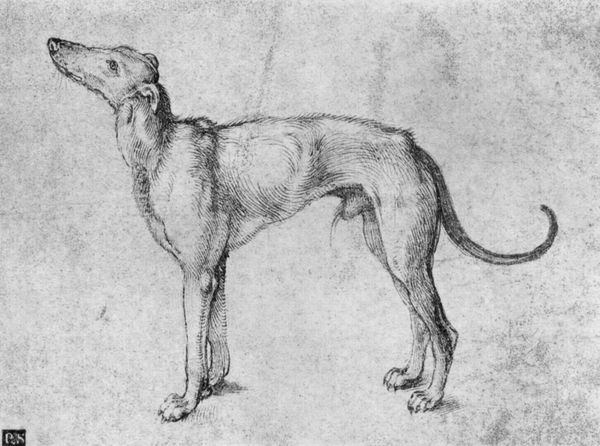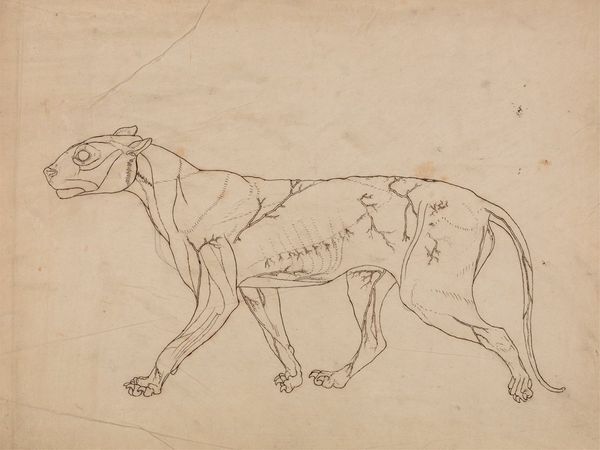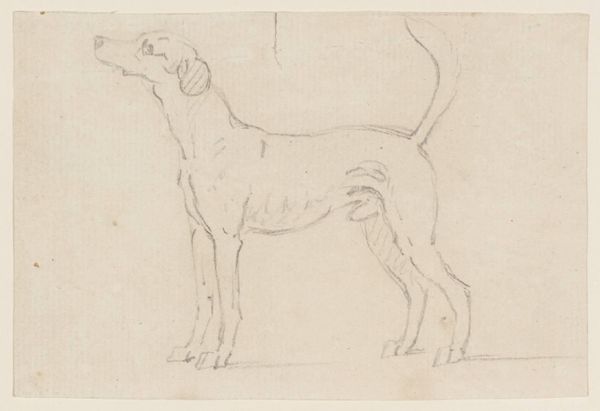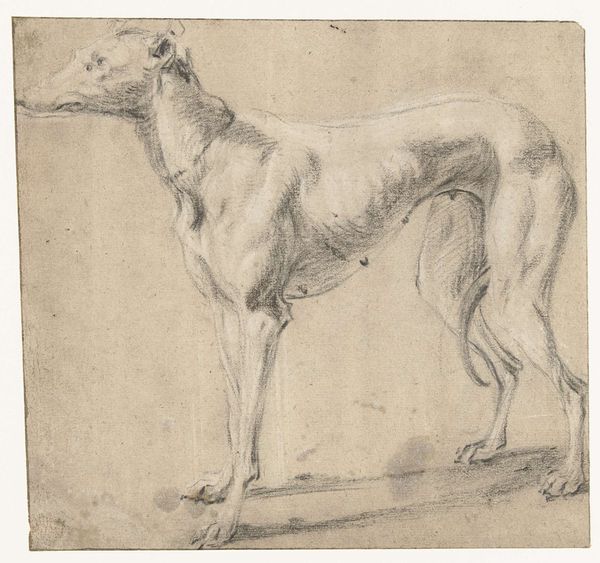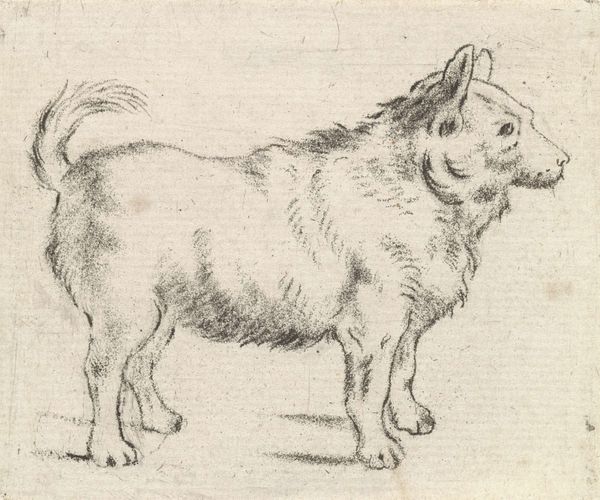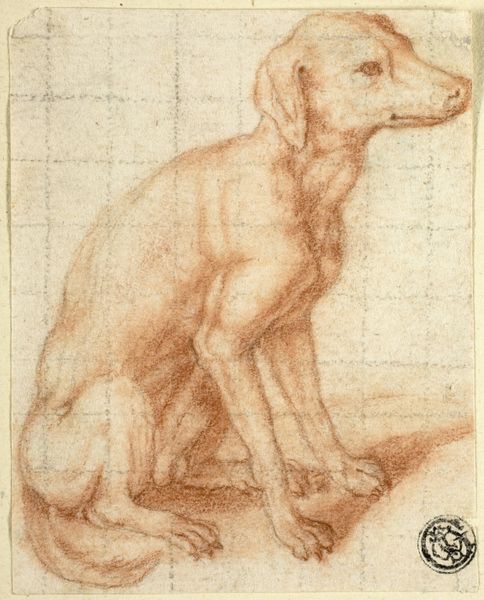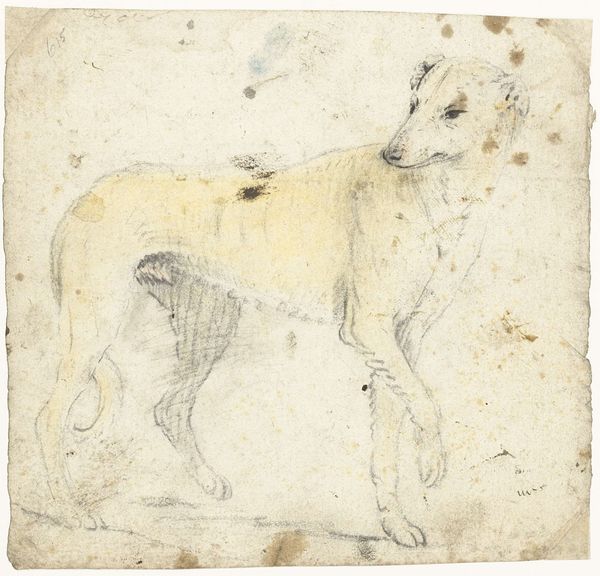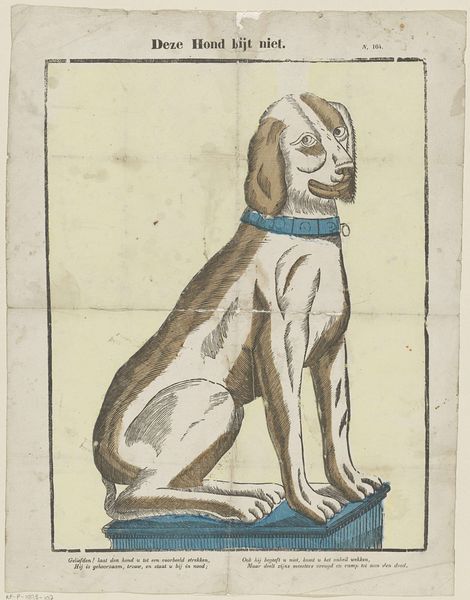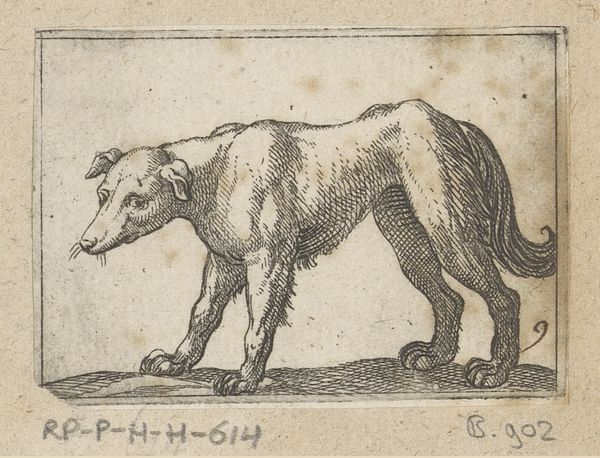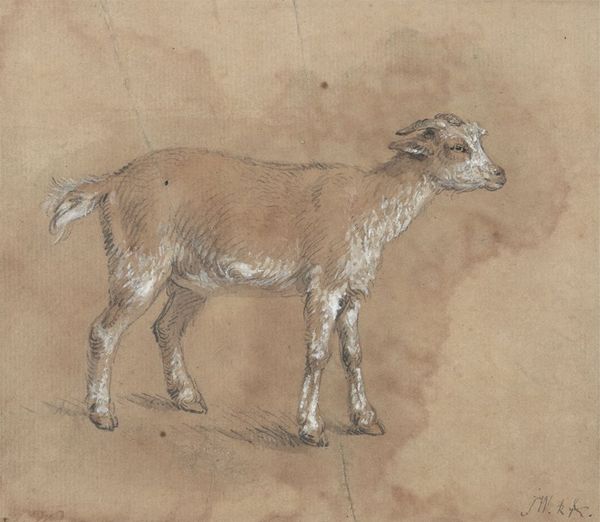
drawing, pencil
#
portrait
#
drawing
#
pencil sketch
#
dog
#
figuration
#
11_renaissance
#
pencil
#
line
#
italian-renaissance
#
realism
Copyright: Public domain
Editor: This is Pisanello’s drawing, "Dog," likely created during the Renaissance. The delicate pencil work really captures the animal's lean physique and alert stance. It's such a straightforward portrayal, almost clinical. How do you interpret this work? Curator: I see it as less straightforward than it appears. Consider the historical context: in Renaissance Italy, dogs, particularly breeds like this one, were potent symbols of wealth and status. Their depiction in art was rarely neutral. Think about power dynamics. Who commissions such a drawing, and why? Is it about celebrating fidelity, hunting prowess, or simply conspicuous consumption? Editor: So, you're saying it's about class and privilege? The dog represents more than just, well, a dog? Curator: Precisely. And it prompts us to question whose stories are being told, and from what perspective. The dog's almost regal bearing, amplified by the detailed rendering, speaks volumes about the societal values of the time. Consider the use of animals to project a man's self image, as if their very being reflects back on the human's inherent virtues. Is this problematic? Editor: I hadn’t thought of it that way, but it definitely gives me a lot to consider. I guess seeing art as purely aesthetic misses some really important angles. Curator: Art is never created in a vacuum. Looking at its cultural context reveals so much about its meaning. What seemed simple is layered, challenging us to really examine who is being portrayed, who the intended audience may be, and to what ends. Editor: Definitely a new way to look at even the simplest of drawings. Thanks for widening my perspective.
Comments
No comments
Be the first to comment and join the conversation on the ultimate creative platform.
